A day of hiking in Fort Fordyce Nature Reserve, Eastern Cape, yielded spectacular views of the Amathole Mountains and rich Afromontane forest, as well as sightings of baboons, zebras and black wildebeests.
On September 27, Vilis and I headed out for a day of hiking in Fort Fordyce Nature Reserve, 100 kilometres to the north of Grahamstown, near the town of Fort Beaufort. Overnight rain had cast silver droplets of moisture onto Rhodes University lawns. Fallen coral tree petals lay like brilliant autumn leaves on sidewalks, except that it’s spring here in South Africa. As we drove through Grahamstown’s empty Sunday morning streets, sun broke through layers of cloud. The intersection of Bathurst and Raglan Streets was like an invisible entrance to Joza township, with its shabby houses and cattle grazing at the roadsides. Lush new grass disguised countless plastic bags and other garbage that littered the township, somehow softening the obvious poverty.
North of the city, ruffles of white cloud drifted over wooded hills under blue-grey clouds hung across the sky. The veld was so much greener than on our last drive north, to Hogsback, six weeks ago. Thicket – that dense collage of shrubs, succulents, and grasses so characteristic of the interior Eastern Cape landscape – cloaked thrusting hills bordering the broad, wooded expanse of the Great Fish River Valley. Prickly pear cacti at the roadside stood like market stands offering green, thorny paddles for sale.
As the little Suzuki Alto we’d rented chugged its way up through Ecca Pass, white-necked ravens soared overhead. A helmeted guineafowl stood on the pavement edge. Farther on, vervet monkeys gambolled on the verge, with two small monkeys tussling in the grass, like teenage boys. Candelabralike euphorbias reached skyward out of dense hillside thicket. Dark-faced sheep grazed in a roadside pasture and all of them were actually inside the fence. On our outings, we’ve frequently encountered livestock on roads and in roadside ditches.
North of the pass, the Amathole Mountains traced pale blue silhouettes on the horizon: the Hogsback range to the east, the Katbergs to the northeast and Winterberg’s lofty profile dead ahead to the north, far in the distance. The road twisted and climbed higher, ascending toward the face of the Great Escarpment. A major geological formation, the escarpment edges the high Central Plateau that occupies much of Southern Africa.
As we rounded a tight curve, a baboon sauntered along the verge overlooking citrus orchards in the Great Fish River valley, near Fort Beaufort. We crossed the Xuxuwa River and were surrounded by orange trees in tidy plots. The youngest trees, with protective plastic around their trunks, looked like they wore long, white stockings. The sweet fragrance of orange blossoms wafted into the car, so rich and heady, it was like olfactory dessert.
As in late July, when I had first travelled to Fort Fordyce on a bird banding excursion, we saw bags of oranges stacked at the roadside at a major intersection. Some of the bags were unattended. Vilis glanced around, wondering where the vendors were. “Maybe they sleep here,” he suggested, “or maybe they’re visiting.” We noticed a ramshackle hut built of corrugated iron, near the intersection, and small groups of people standing among shrubs edging the road. If those people earn their livelihood selling oranges, it’s a hard life.
Ten kilometres north of Fort Beaufort, we turned onto the rough, gravel Post Retief Road leading to Fort Fordyce Nature Reserve. Vivid green leaves softened thorny acacias in roadside pastures. A warthog sprinted across the gravel ahead of us. Two Egyptian geese winged overhead. It was the kind of road where it seemed that anything could walk out in front of you.
We rattled our way up through Fullers Hoek Pass, tracing the edge of the Great Escarptment. A bushbuck at the roadside did a quick turnabout and bounded downslope, although to where, I don’t know since the roadside plunged precipitously. By the time we topped out on the escarpment, we were both suffering from bladder woes due to the rough road.
The nature reserve headquarters are situated in an idyllic clearing atop the escarpment and look out over a vast expanse of hills and valleys, all the way to the Amathole Mountains. The drive from Grahamstown was worth it just for that view. We checked in at the office, and Vilis asked the attendant, “Is it cold here in winter?” The woman shuddered. “Cold! We get snow.” Since Vilis and I had so far only seen snow in patches high on distant mountaintops, we were impressed.
The late morning air was hot and still when we started out on Bushbuck Trail, one of four loop trails for hiking in Fort Fordyce Nature Reserve. Trail markers were few and far between, and we ended up hiking part of Baboon Trail that traversed a burnt-over area with outcrops of bedrock. We heard baboon alarm barks and saw a troop of baboons bounding off the track into the regenerating vegetation that consisted of grasses, heaths, bracken and shrubs, including acacias.
We retraced our steps and linked up with Bushbuck Trail, using my cell phone picture of the map of the reserve trails (painted on a large sign at headquarters) and Vilis’s satellite image of the reserve to pinpoint our location. Fifteen years ago, when we tramped hundreds of kilometres in New Zealand with our sons, we carried small guidebooks with us. Even five years ago, when Vilis and I bushwalked in Australia, we relied on a guidebook. Here in South Africa, we use a mobile device. Times, they are a-changing.
The trail led us through another burnt-over, regenerating area – evidence of the reserve’s attempts to remove alien trees that had earlier been planted by settlers and foresters. Vilis said, “That’s why there aren’t any trail markers. The trees are gone!” We spotted two more baboon troops and eventually entered a pocket of shady Afromontane forest. Cool air soothed us, and we heard the refreshing sound of a trickling stream.
We crossed the stream and climbed through the forest to an open lookout on the escarpment’s edge. Sheer rock faces plummeted into lush forest. Countless shades of green cloaked ranges of hills in the valley below us. What a fantastic spot to eat our lunches! We noticed two rope anchors bolted into the rock at the clifftop. The reserve’s cliffs are undoubtedly a climber’s paradise. As we gazed out over the vast expanse of woodland below us, a Knysna turaco’s deep, growling call set up a chain of calls that resonated through the forest.
After we left the lookout, the scarcity of trail markers again confused us. We hiked downhill through an open forest on an old road edged with mossy rocks (old forestry trail or oxen track?), only to realize that we’d gone in a circle instead of continuing on the Bushbuck Trail loop. Thunder rumbled overhead as we wearily slogged back up the road.
After we finally linked up with the correct trail in yet another cut-over area, lightning tore the sky, and thunder pounded close around us. We took shelter in a grove of oak trees to escape the pelting rain. A sudden chorus of frog song accompanied the rain, as though the downpour had instigated a rush to mate. “Who would plant these oaks way out here,” I muttered and then answered my own question. “A bunch of British soldiers.” Fort Fordyce had been a British outpost during the Frontier War between the Xhosa and Khoi and the British, during the mid-nineteenth century.1
When the rain let up, we hiked back to the reserve headquarters. In the distance, purple curtains of rain split by lightning shrouded the mountains. We drove tracks through the reserve, our favourite being the track through the sourveld to Phakamisa Lodge, a former farmhouse now used as accommodation for reserve visitors. Perched near the escarpment edge, the lodge overlooked a landscape of rugged peaks and deep, dark valleys. Two small groups of plains zebra and a couple dozen black wildebeest grazed on the veld uphill from the lodge. I imagined waking up in the lodge and looking out to see those quintessential African mammals grazing on the lawn. My annoyance with the poorly-marked trails, which had grown steadily as we’d hiked, dissipated.
In the late afternoon, after a full day of hiking in Fort Fordyce Nature Reserve, we crept down from the escarpment, drank in the sweet scent of orange blossoms and dodged cattle on the road as we drove over rain-washed veld to Grahamstown.
Reference:
- David Saks. Hunting Maqoma. The Second Waterkloof Campaign, October-November 1851. The South African Military History Society. Military History Journal Vol 13 No 4 – December 2005. Accessed Feb-4-2018 at http://samilitaryhistory.org/vol134ds.html

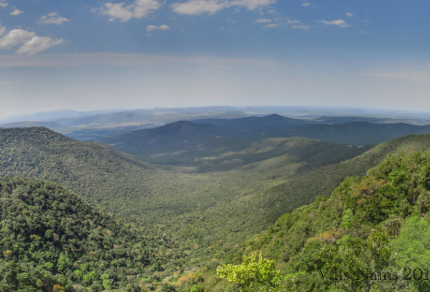
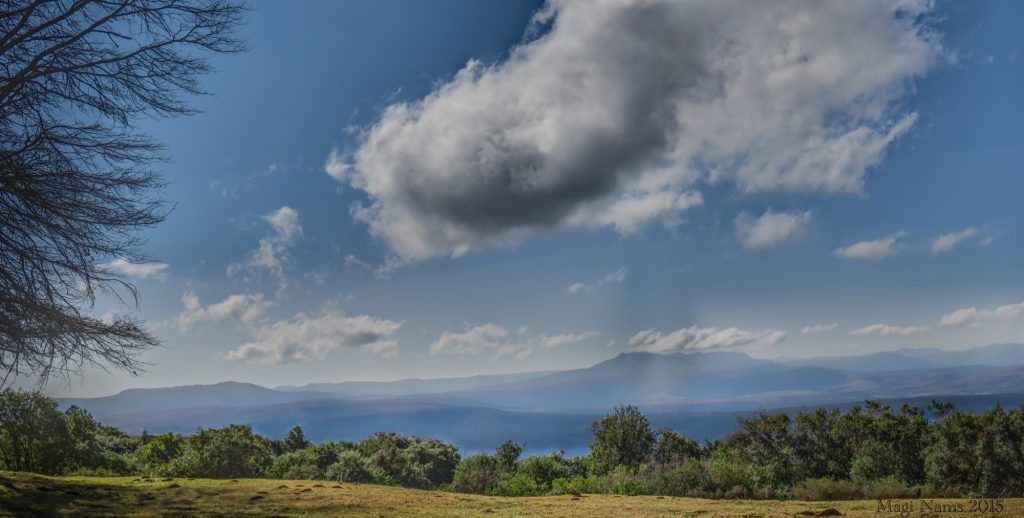
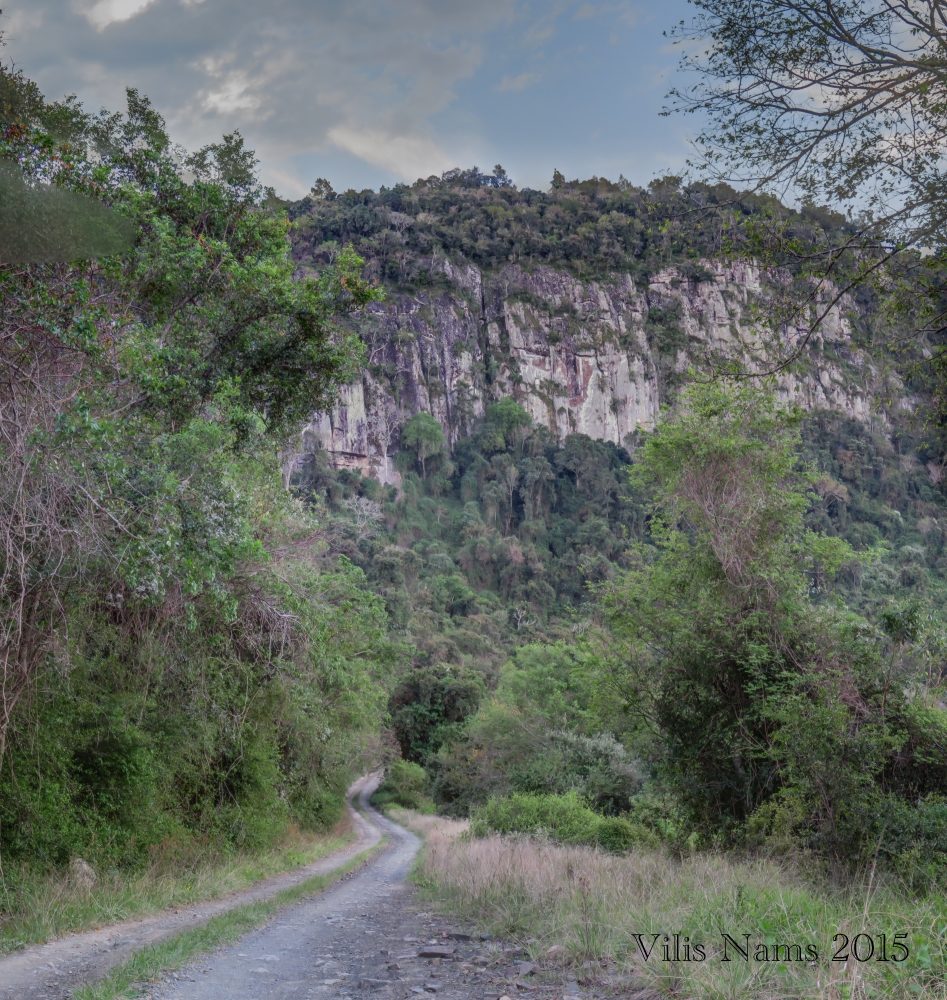

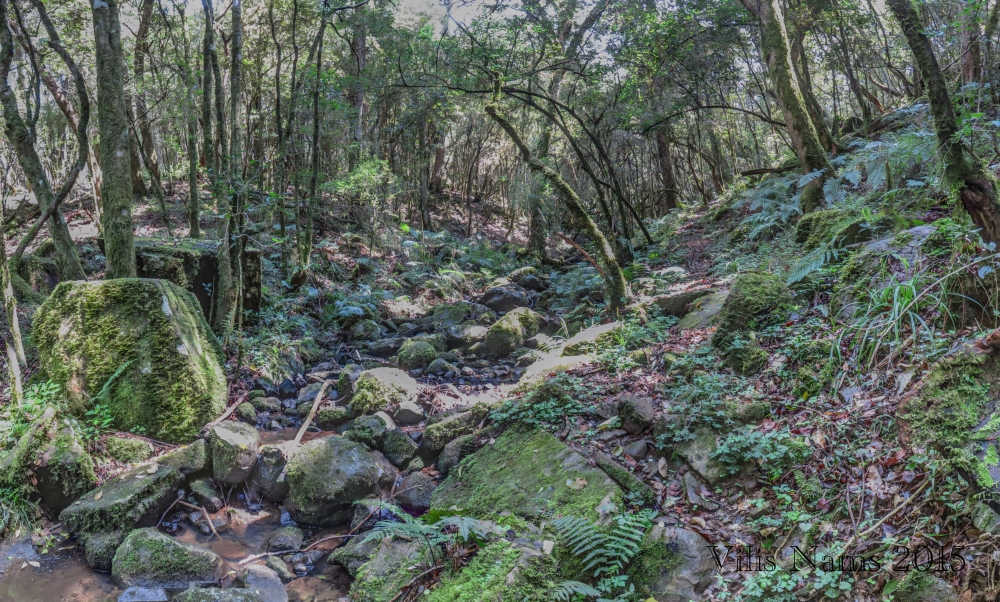
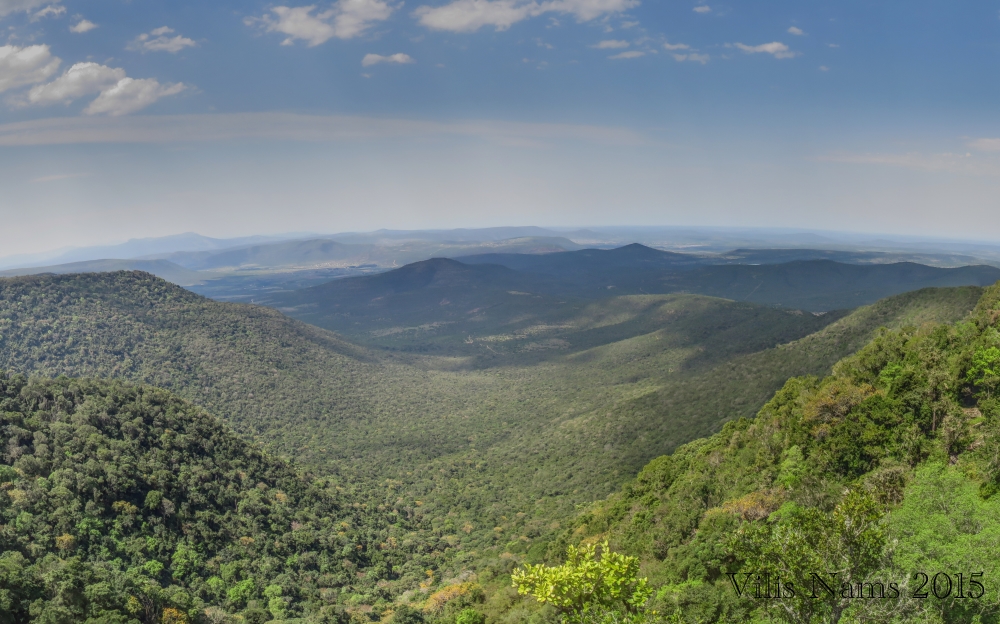
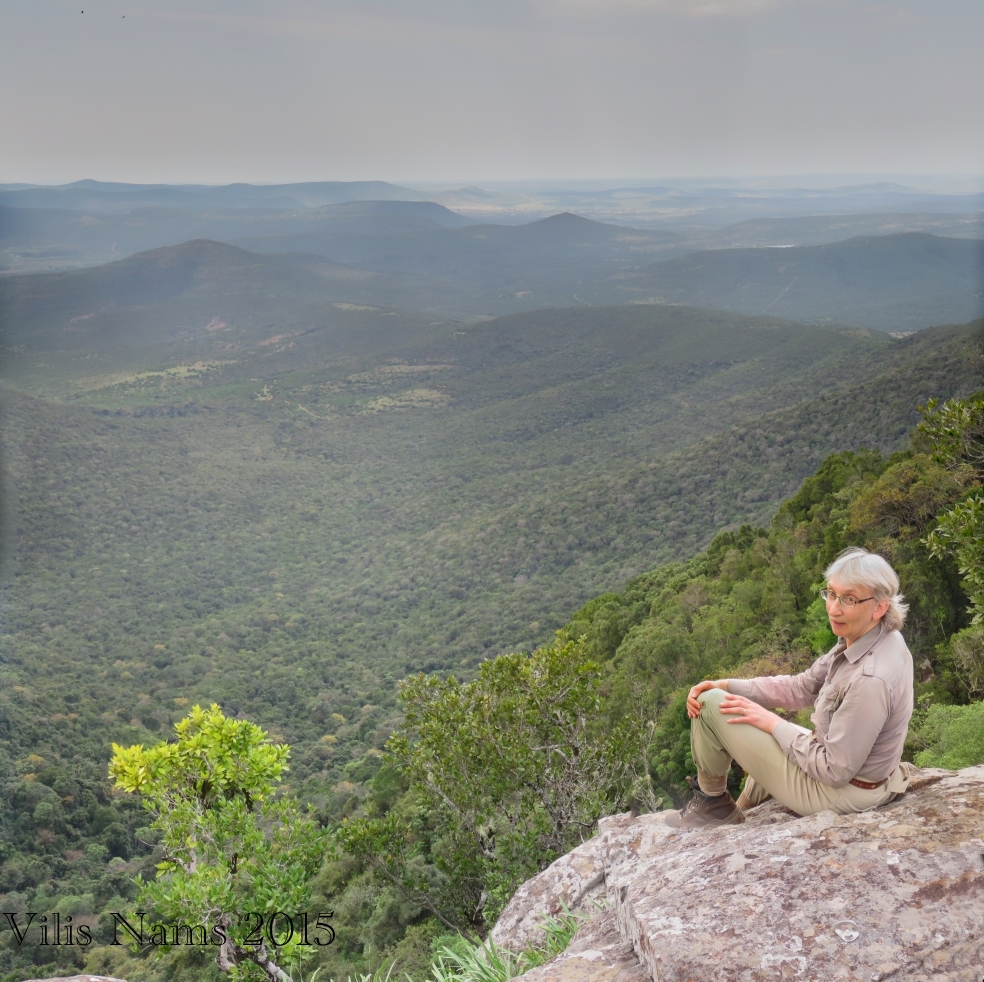
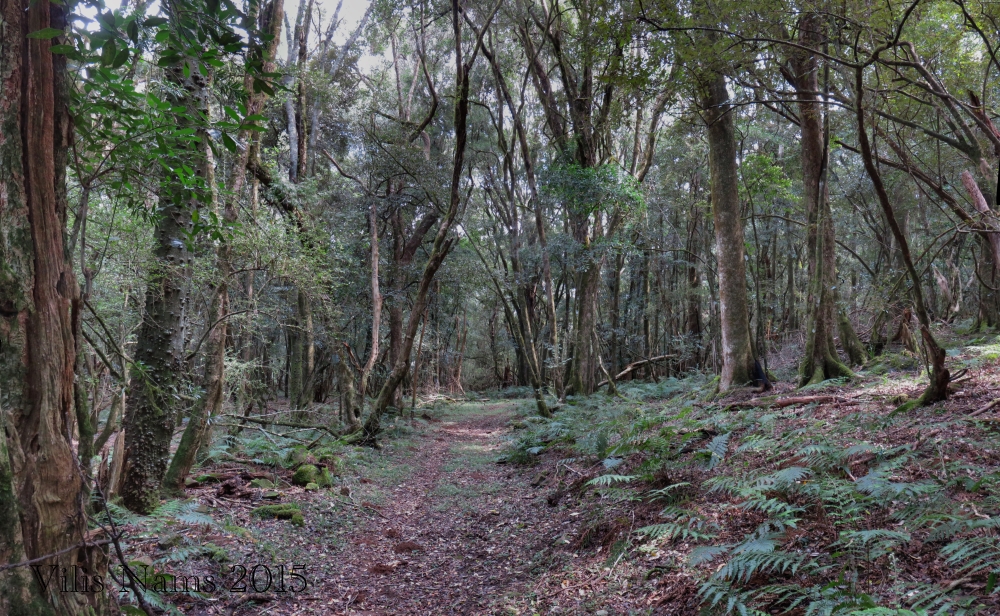
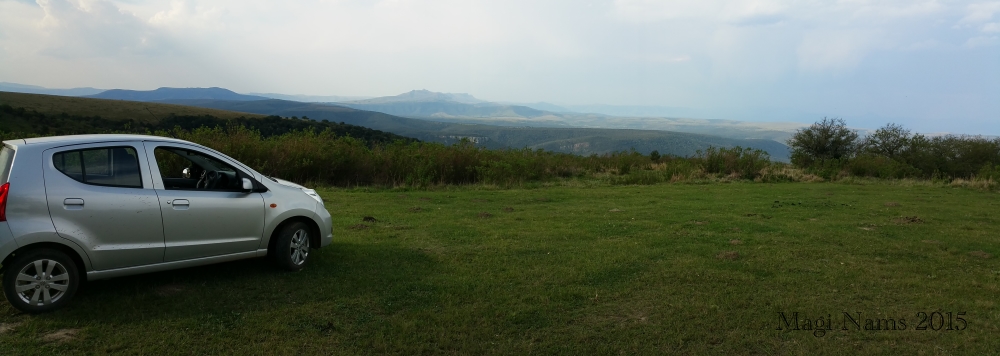
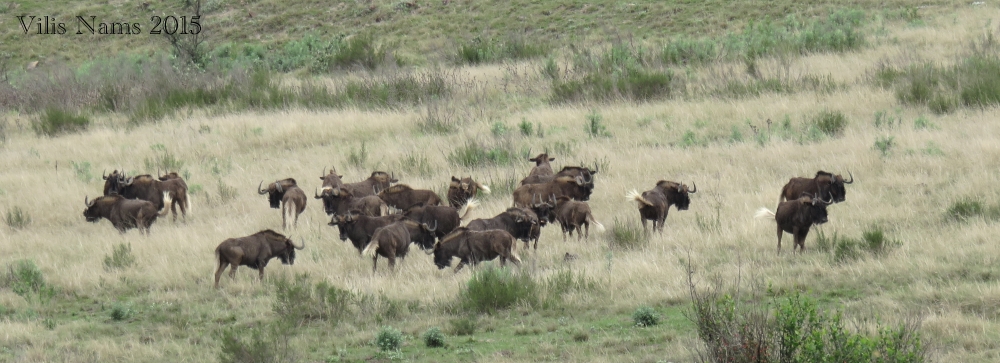

Thank you – this article was so helpful. We are thinking of taking a group hiking their later this year.
Thanks for visiting my website, Celeste. Fort Fordyce boasts spectacular views, a variety of wildlife, and an intriguing history. Happy hiking!